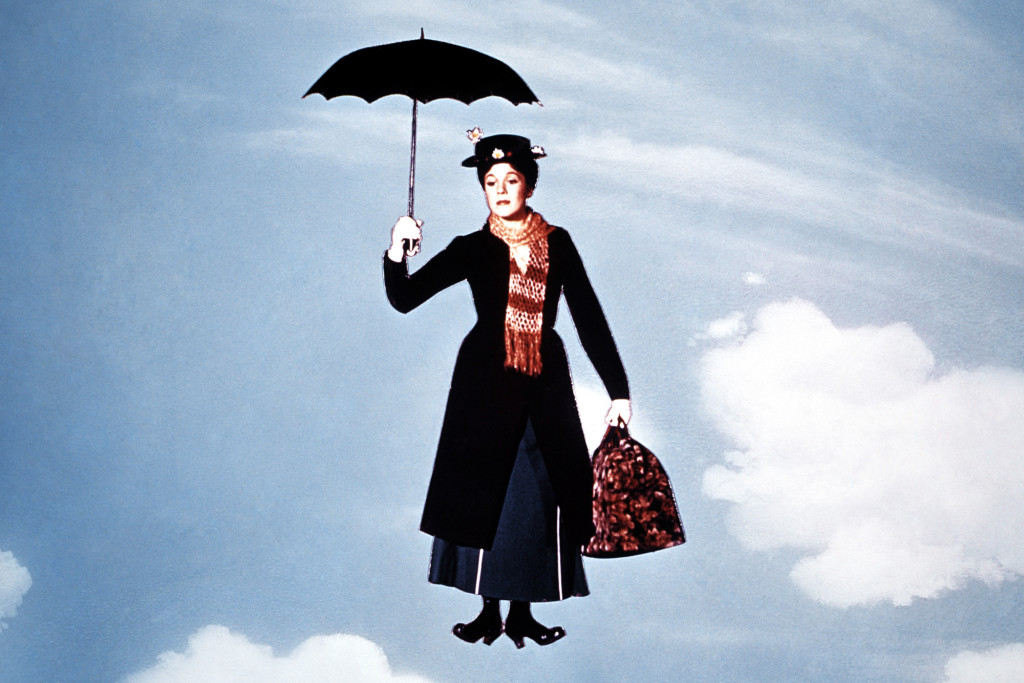
by Jennifer Zhan, opinions editor
A spoonful of sugar is not needed to make this Disney classic go down. The tale of the mysterious nanny trying to save the dysfunctional Banks family has been widely regarded as a family favorite. It remains creative, charming and lively even half a century later. True, you may have to look closely between the song and dance numbers to recognize author P.L. Travers’ intimidating and sarcastic original character. But make no mistake: movie Mary is just as capable of charming an audience as her literary basis.
Julie Andrews shines as magical Mary Poppins from the moment her umbrella flies her to 17 Cherry Tree Lane. Mary does her best to maintain a stern composure in front of the Banks children. However, her delight in magical adventures is obvious. Her old friend Bert, played by Dick Van Dyke, joins her on those adventures when he’s not busy taking on a variety of odd jobs. Bert seems to be the only person unaffected by the unusual methods Mary uses to try to help the Banks family. In fact, the comfortable interactions between Mary and Bert make for some of the best moments. Their chemistry makes even the most sudden duets flow as effortlessly as their dialogue.
But it’s not just the duets that are stunning. All of the songs in “Mary Poppins” are beautifully composed and catchy. Even the instrumental background tracks are important. They each draw attention to the actors’ movements and keep the plot moving with subtle increases in tempo. It seems the direction has been carefully planned. The combination of live-action and animation strengthens the film quality by keeping the overall storytelling engaging. However, while most of the special effects are impressive works of editing, a select few look embarrassingly unrealistic even for their time (for example, when Mary sits on the cloud — nice strings, Disney). The plot begins to drag in lengthy scenes where the director is clearly relying on the special effects to hold audience attention. Younger children might not have lost interest as quickly, but I’m sorry — dancing penguins can only captivate me for so long.
Still, the energy Bert brings to his dances is so incredibly contagious it managed to carry me through those scenes and make up for his over-the-top cockney accent. The acrobatics of supporting dancers, especially the rowdy chimney sweeps, also help increase enthusiasm levels of scenes that I thought could have been cut much shorter.
In fact, certain dancing and singing scenes were so memorable that when I started the movie I forgot “Mary Poppins” was anything more than a musical. However, it quickly establishes its comedic value. Humor is ever present, from sarcastic exchanges between the household staff to the truly terrible (and by truly terrible I mean absolutely wonderful) jokes shared by Bert. And while I would normally agree with Uncle Albert that everything can use a little more humor, I think Disney managed to find what we all want — the right balance of feeling, fun and funny.
The lovable nanny herself claims that Mary Poppins is practically perfect in every way. And though every aspect was not flawless, I’m inclined to agree. “Mary Poppins” is touching and enjoyable and reminded me of the beauty of childhood idealism. That was exactly what I had hoped for when I dusted it off this weekend. Whether you’re looking to share a cheesy moment with your family or simply want to excite your imagination, “Mary Poppins” is the right movie for you.
Mary Poppins opened in the US on August 27, 1964. It won five Academy Awards and was selected by the Library of Congress to be preserved in the United States National Film Registry. The process of bringing Mary Poppins from paper to the screen inspired the 2013 drama Saving Mr. Banks.

